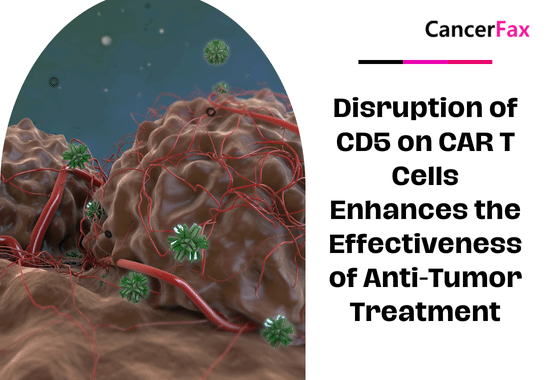Cervical cancer
Chronic cervicitis is more common than after delivery, miscarriage or surgical injury to the cervix, pathogens (mainly staphylococcus, streptococcus, Escherichia coli, and anaerobic bacteria) invade and cause infection, mainly manifested as an increase in leucorrhea. With increasing age, the cervix gradually shrinks, and some cervicitis tends to heal itself. If it spreads along the uterine sacral ligament to the pelvis, there may be lumbosacral pain and *** pain; if there is cervical polyps, *** bleeding may occur.
Only after you know what are the characteristics of cervical cancer can you prevent it. The prevention of cervicitis first requires regular gynecological examination in order to detect cervical inflammation early and treat it. It is also necessary to actively and thoroughly treat acute vaginitis and acute endometritis. Pay attention to personal hygiene and wash underwear frequently. When washing the vulva and vagina with acidic or alkaline solutions, avoid excessive concentrations. The man should develop the habit of washing the vulva every night or before *** to prevent infection caused by pathogens being brought into the vagina during ***.
Female genitalia and surrounding connective tissue, pelvic peritoneum inflammation, called pelvic inflammatory disease. The pathogens causing pelvic inflammatory disease are staphylococcus, E – coli, streptococcus, anaerobic bacteria and sexually transmitted pathogens such as gonococcal, herpes virus, chlamydia trachomatis and mycoplasma. The main routes of infection are: spread through the blood circulation, spread through the lymphatic system, spread upward along the genital mucosa and direct spread after infection of adjacent organs.
①Acute pelvic inflammatory disease: a history of acute infection, hidden pain in the lower abdomen, muscle tension, tenderness and rebound pain, accompanied by fast heart rate, fever, and a large amount of purulent discharge in the vagina. Severe illness may include high fever, headache, chills, loss of appetite, etc .; nausea, bloating, vomiting, diarrhea, etc. when peritonitis occurs; when abscesses are formed, there may be lower abdominal masses and local compression stimulation symptoms, and the masses may be urinating Difficulty, frequent urination, dysuria, etc .; the mass located behind can cause diarrhea, heavy feelings after having a rush, and difficulty in defecation.
② Chronic pelvic inflammatory disease: The systemic symptoms are sometimes low fever and susceptibility to fatigue. Some patients have symptoms of neurasthenia due to the long course of the disease, such as insomnia, lack of energy, and general malaise. Lower abdominal distension, pain, and lumbosacral soreness are often exacerbated after fatigue, after sex, and before and after menstruation. Chronic inflammation leads to pelvic stasis, heavy menstruation, menstrual disorders when ovarian function is damaged, and infertility when tubal adhesions become blocked.
What are the characteristics of cervical cancer?
The clinical manifestations of cervical erosion are increased leucorrhea, thick, or purulent, or bloodshot. Clinically divided into cervical erosion (mild, moderate, severe erosion), cervical polyps and cervical gland follicular cysts. Among them, cervical erosion is the most common. Visible increase in vaginal secretions, or yellow or red, or purulent, smelly, or accompanied by *** pain, vaginal bleeding after ***, lower abdominal pain, severe contact bleeding, and lead to infertility Combined with the naked eye observation of the vaginal endoscope, the disease can be diagnosed. It often develops simultaneously with vaginitis and appendicitis. In addition, a cervical smear or biopsy should be performed to exclude malignant lesions.
Cervical cancer does not have any symptoms in the early stage. As the disease progresses, patients may have abnormal vaginal bleeding. Because young women are in a sexually active period, estrogen levels and *** frequency are higher, so it is easier to take *** bleeding as the first symptom. In addition, leucorrhea is also a common symptom of cervical cancer, about 80% of cervical cancer patients have this symptom.
Clinical follow-up observations show that it takes about 10 years to develop from normal cervical precancerous lesions to cervical cancer. From this perspective, cervical cancer is not terrible, it is a preventable and curable disease. The key to prevention and treatment lies in: regular gynecological examination, timely detection and treatment of cervical precancerous lesions, and termination of its development to cervical cancer. If preventive measures can be implemented, the cure rate for cervical cancer is high.
What are the characteristics of early cervical cancer?
They are usually asymptomatic, and there is no obvious difference from chronic cervicitis. Sometimes they even see a smooth cervix, especially in elderly women with cervical atrophy. The main symptoms are:
Vaginal bleeding: Young patients often present with contact bleeding, which occurs during sex, gynecological examination, and bleeding after stool. The amount of bleeding can be more or less, generally according to the size of the lesion, the invasion of the interstitial blood vessels. The amount of bleeding in the early stage is small, and the large lesion in the late stage is a large amount of bleeding. Once the large blood vessels are eroded, it may cause fatal hemorrhage. Younger patients can also be characterized by prolonged menstrual periods, shortened cycles, and increased menstrual flow. Elderly patients often complain of irregular vaginal bleeding after menopause.
Vaginal drainage: Patients often complain of increased vaginal drainage, white or bloody, thin like water or rice soup, and have a fishy smell. In the late stage, due to cancer tissue rupture, tissue necrosis, secondary infection, etc., a large amount of purulent or rice soup-like stench leucorrhea was discharged.
What are the characteristics of advanced cervical cancer?
Secondary symptoms appear according to the extent of lesion invasion. When the lesion affects the pelvic connective tissue, the pelvic wall, the ureter or rectum, and the sciatic nerve, it often complains of frequent urination, urgency, swelling of the anus, constipation, constipation, weight loss, and lower extremity swelling and pain. Cause uremia. By the end of the disease, the patient may have wasting, anemia, fever, and systemic failure.
Only after knowing the characteristics of cervical cancer can the diagnosis of cervical cancer be determined. This is mainly based on the medical history and clinical manifestations, especially those with contact bleeding, need to do a detailed systemic examination and gynecological triple examination, and use cervical curettage Film cytology examination, iodine test, nitrogen laser tumor inherent fluorescence diagnostic method, colposcopy, cervical and cervical canal biopsy, cervical cone excision, etc. After the diagnosis of cervical cancer, chest X-rays, lymphography, cystoscopy, and rectoscopy should be performed according to the specific situation to determine its clinical stage.
In order to prevent cervical cancer, the following people should have a gynecological cancer check every 2 to 3 years: ***, married before the age of 18; sexual life disorder, *** frequent and STD patients; early marriage multiple births; Cervical inflammation and erosion; vaginal bleeding after ***, vaginal discharge after menopause, especially bloody discharge; those over 45 years old without any symptoms, regular examination should also be performed regularly. Self-prevention methods for cervical cancer are:
① No promiscuity.
② Promote late marriage and late birth, family planning, to avoid damage to the cervix.
③ Pay attention to hygiene and keep the lower body clean.
④Men’s foreskin should be circumcised if it is too long, often remove the foreskin stains
with water and keep the genitals clean.
⑤ If hysterectomy is performed for other reasons, a uterine scrape should be checked before surgery.
⑥ Actively treat chronic inflammation and deal with precancerous lesions.
In addition, the prevention of cervical cancer should avoid tobacco and alcohol, avoid cold, greasy food.

